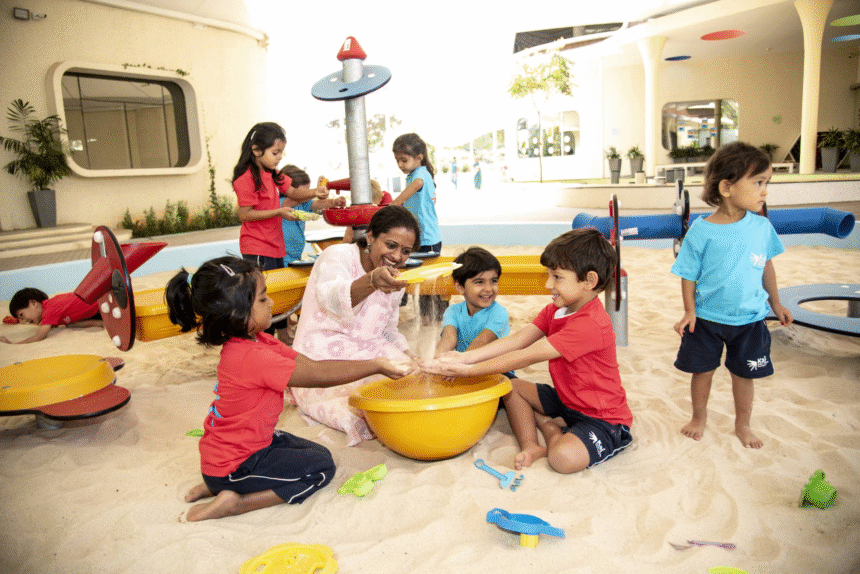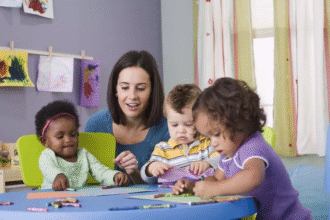Choosing the best daycare for your child is one of the most important decisions you’ll make as a parent. It’s not just about finding a place where your child will be watched—it’s about finding a nurturing, safe, and stimulating environment where they can learn, grow, and feel loved. Whether you’re returning to work or looking to help your little one socialize and learn early, selecting the right daycare requires careful thought.
In this article, we’ll walk you through everything you need to know—from understanding your child’s needs to checking licenses, visiting centers, asking the right questions, and trusting your instincts. Let’s make this journey easier for you.
1. Understand Your Child’s Needs
Before you even start looking for a daycare, ask yourself what your child truly needs. Consider:
- Age and personality: Infants need a quiet and cozy space with lots of individual care. Toddlers may benefit from more interactive, group-based activities.
- Temperament: Is your child shy or outgoing? Some daycares have a more structured environment, while others are more relaxed and flexible.
- Special requirements: Does your child have allergies, dietary restrictions, or developmental needs?
Knowing what suits your child will help you narrow down your options.
2. Know Your Options: Types of Daycare
There are different kinds of daycare setups, and each has its pros and cons.
a. Childcare Centers
- Licensed facilities that follow state regulations.
- Offer structured programs with qualified staff.
- Usually have more children and staff.
b. Home Daycares
- Run in someone’s home, often with a smaller group of children.
- Can offer a homely, nurturing environment.
- May be less structured but more personalized.
c. Preschool Programs
- Focus more on early learning and school readiness.
- Best for children aged 3-5.
d. In-Home Nannies or Babysitters
- One-on-one care at your home.
- More flexible but often more expensive.
Choose the type that fits your budget, lifestyle, and child’s temperament.
3. Do Research and Ask for Recommendations
Start by asking friends, family, neighbors, and coworkers for suggestions. Online platforms like Google Reviews, Facebook groups, or local parenting forums can also provide helpful insights.
Make a list of potential options. Check each center’s website for photos, programs, fees, hours, and reviews.
4. Check Licenses and Certifications
A quality daycare should be licensed by your local government or child welfare department. Look for:
- State license or registration
- Health and safety inspection reports
- CPR and first aid certifications of staff
- Background checks
You can contact your state’s child care licensing office to verify whether a center is properly licensed and if it has had any violations.
5. Visit in Person
Once you’ve narrowed your list to 2–3 top choices, schedule in-person visits. This is one of the most important steps.
When you visit, pay attention to:
- Cleanliness and safety (Are the floors clean? Are outlets covered? Toys clean?)
- Staff behavior (Are they warm, calm, and attentive?)
- Child-to-caregiver ratio (Fewer children per adult means more individual attention)
- Activity schedule (Are kids engaged in age-appropriate learning and play?)
- Nap and meal areas (Are they clean, quiet, and comfortable?)
Trust your gut. If something doesn’t feel right, it’s okay to walk away.
6. Ask the Right Questions
Here are some must-ask questions during your visit:
- What is your daily routine like?
- How do you handle discipline and conflict among children?
- What is your policy on illness or sick children?
- How do you keep parents informed about their child’s day?
- How do you encourage learning and development?
Their answers will give you a clear idea of whether their approach matches your parenting style.
7. Evaluate Cost and Location
Of course, budget and convenience matter. Ask about:
- Monthly fees and what’s included (meals, diapers, supplies)
- Any extra fees (late pick-up, registration, field trips)
- Opening and closing hours
- Proximity to home or work
Choose a daycare that balances quality and affordability. Remember, the cheapest option isn’t always the best.
8. Observe the Children
During your visit, quietly observe the children at the daycare:
- Do they seem happy and relaxed?
- Are they engaged in activities or wandering around bored?
- Are they treated with kindness and respect?
The environment your child will spend hours in should be joyful and full of positive energy.
9. Look for Stability
High staff turnover can be a red flag. Children need consistency to feel safe and secure. Ask how long the staff has worked there and if there’s a lead caregiver who will consistently be with your child.
10. Trial Days and Communication
Many daycares allow a trial period or shorter days to help your child adjust. Use this time to observe how your child responds.
Also, good communication is key. Choose a daycare that:
- Sends regular updates and photos
- Is open to your feedback
- Has a system for emergencies or quick chats
11. Trust Your Instincts
Finally, no matter how great a place looks on paper or in person, if you have a lingering doubt, it’s okay to keep looking. As a parent, your instincts are powerful. Trust them.
You want to feel confident and at peace when you drop your child off—not anxious or unsure.
Conclusion
Choosing the best daycare is a process that takes time, research, and thought. But once you find the right one, the peace of mind it brings is priceless. Look for a place where your child feels safe, loved, and encouraged to grow. Your child deserves the best—and so do you.
FAQs About Choosing a Daycare
1. At what age should I start looking for a daycare?
You should start looking at least 3–6 months in advance, especially for popular daycares that fill up quickly. Some parents even get on waiting lists before their baby is born.
2. What is the ideal child-to-caregiver ratio?
For infants, a 1:3 or 1:4 ratio is ideal. For toddlers, 1:5 or 1:6 is acceptable. The fewer the children per caregiver, the better the attention each child receives.
3. Should I choose a daycare close to home or work?
This depends on your schedule. Close to work allows easier visits during breaks, while close to home might make drop-offs and pick-ups more convenient for other caregivers.
4. What red flags should I watch out for?
Some warning signs include:
- Dirty or cluttered environment
- Unfriendly or inattentive staff
- Children looking bored or unhappy
- No clear routine or safety policies
- Poor communication with parents
5. Is it normal to feel guilty about putting my child in daycare?
Yes, many parents feel that way at first. But a good daycare can provide socialization, learning opportunities, and development that help your child thrive.
Remember: Choosing a daycare isn’t just a checklist—it’s about finding a second home for your child where they are safe, happy, and ready to grow. Take your time, ask questions, and go with what feels right for your family.






